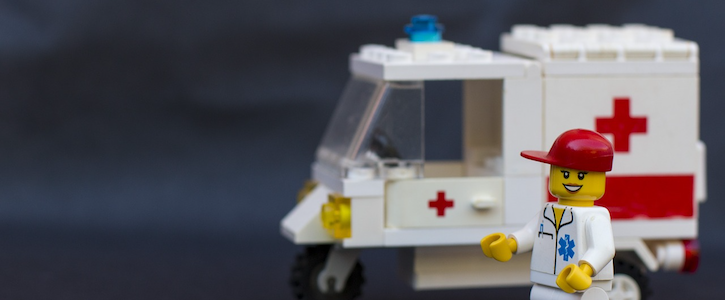Why High-Tech, High-Touch Healthcare Is Crucial for Delivering Patient Value
Digital solutions can’t solve this problem without some help from humanity.

Being with patients during the time of a health emergency — at the moment of their greatest vulnerability — and providing comfort, companionship, connection and support can be just as important as providing actual healthcare treatments. Nationwide, the average time it takes for a person to see a physician in the emergency department (ED) is 64 minutes, and 19 percent of ambulance trips to the ED come from nursing homes. In 2015, I set out to reinvent 911 so that physicians could better care for patients at the moment of their emergency, and nursing homes seemed like the right place to start.
>> LISTEN: Overcoming the Cultural Resistance to Health Tech
In 2015, as a 34-year-old, I lived in a nursing home for three months to understand the patient experience. I had been an emergency physician at Beth Israel Deaconess in Boston, and time and again, I had seen elderly patients coming to me in states that I knew could have been more efficiently and effectively treated in the nursing home, if only our healthcare system could help provide and incentivize the time and tools.
The current challenges are not the fault of nursing homes or any of the people who administer care to this patient population, which is among the most challenging and noble callings in medicine. In fact, there is no fault to be assigned, but rather an opportunity to better support this underserved population and the staff that cares for them. Value-based care can transform the patient experience for those nursing homes, and it can provide an incentive structure that benefits the homes and indeed the healthcare system as a whole.
Challenges Facing Nursing Homes
The current economics of nursing home care prevent the expansion of facility staff. Most homes operate under very tight margins, and the payer reimbursement model — via Medicare, Medicare Advantage, Medicaid or private insurers — limits the options available to nursing home operators. Further, nursing home staff tends to be trained in chronic care for the patient population that they’re typically caring for, meaning that patients are often transferred to the ED for acute issues that arise.
Once this patient population is transferred to the ED, the cost to payers skyrockets. The average cost of a patient transfer to the ED from a nursing home is more than $15,000. The nature of the health condition many of these patients are experiencing means that they’re almost invariably admitted to the hospital after entering the ED. Patients suffering from complications as simple as a urinary tract infection often end up spending multiple days in a hospital, costing the healthcare system tens of thousands of dollars. In addition, the patient is removed from their home, which is isolating and uncomfortable.
These scenarios can be avoided, however, if we create an incentive structure that allows for the skills, technology and expertise to be brought to the patient rather than bringing the patient to the care.
The shift to value in healthcare is among the most important, positive and widely supported developments happening in our country. People who can be cared for in lower-cost settings should be cared for in those settings — particularly when it means avoiding unnecessary, and often traumatic, transfer experiences.
The way we can do this is through hands-on connections, coupled with technological solutions.
High-Tech, High-Touch Healthcare
Many in medicine are wary of technological solutions. The promise of technology has been slated to revolutionize healthcare for years, but the reality has come nowhere near to meeting expectations. The challenge often arises because there are limitations to technology when it’s not administered correctly or is used to completely displace the human touch. Healthcare workers in nursing homes, hospitals and really any healthcare setting are focused on patient care and need technology to work with and for them. Clinicians don’t need tech to completely upset their workflows.
Coupling technology with technicians who are versed in the use and application of the technology provides the best way to realize value-based solutions. Partnering tech-enabled medical services solutions with healthcare workers in traditional settings allows for a step-wise improvement that will deliver value for the patient and the healthcare system for years to come — and can allow us to be with patients, and deliver emergency care, when and where they need it.
Ultimately, models like these allow the right skills to be delivered at the right time — provided by and with humanity, enhanced by technology and informing future interventions via data and analytics capture that will continuously improve our understanding of emergency needs and interventions.
Timothy Peck, M.D., is co-founder and CEO of Call9. He previously held a faculty position at Harvard Medical School and was the chief resident in the emergency department at Beth Israel Deaconess/Harvard. While at Beth Israel Deaconess, Peck repeatedly encountered the challenge of treating patients who would have had superior outcomes had he and his team been able to treat them earlier. Shortly after learning the scope of the problem, Peck conceived of Call9, applied to the startup incubator Y Combinator and set out to solve it via a combination of on-site care coupled with technology.
Get the best insights in healthcare analytics directly to your inbox.
Related